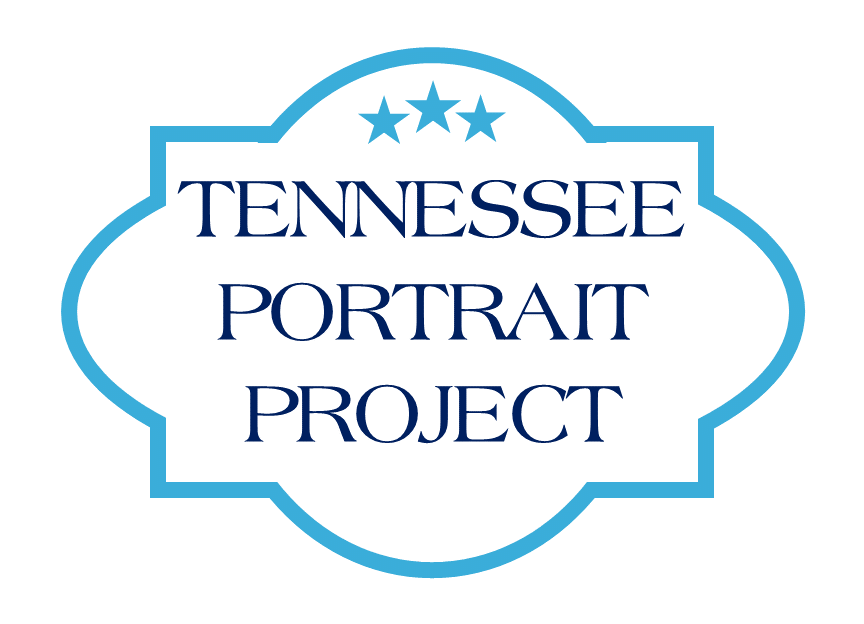History of Project
At its Annual Meeting in 2000, the National Society of Colonial Dames of America in Tennessee (NSCDA-TN) decided to expand upon their earlier study of portraits. The earlier study had produced a 1964 catalogue entitled “Portraits in Tennessee Painted Before 1866.” This catalogue listed approximately 500 portraits of Tennesseans. The new project proposed to expand the study to include portraits in the state of Tennessee of residents and non-Tennesseans painted prior to 1941. This was subsequently changed to include all portraits regardless of date of creation.
In 2002, the Nashville Town Committee of the NSCDA-TN established a committee to telephone their members and seek information about portraits which had not been included in the 1964 catalogue. These calls elicited 300 “new” portraits, and with this information available, the Colonial Dames met with staff at the Tennessee State Museum to determine the next steps.
The  meetings resulted in the development of a collaborative involving the Nashville Town Committee of NSCDA-TN, the Tennessee State Museum and the State Museum Foundation. With donations, generated through the Nashville Town Committee from Colonial Dames and family foundations, The Memorial Foundation, The Community Foundation of Middle Tennessee, The Atticus Trust, E.B.S. Foundation, Louie & Betty Philips Foundation, and the Tennessee State Museum Foundation, F. Lynne Bachleda was engaged as Research Coordinator. Since January 2003, over 2400 portraits have been documented. The documentation process has involved taking or receiving a digital image of the portrait and compiling a basic database of information about each portrait.
meetings resulted in the development of a collaborative involving the Nashville Town Committee of NSCDA-TN, the Tennessee State Museum and the State Museum Foundation. With donations, generated through the Nashville Town Committee from Colonial Dames and family foundations, The Memorial Foundation, The Community Foundation of Middle Tennessee, The Atticus Trust, E.B.S. Foundation, Louie & Betty Philips Foundation, and the Tennessee State Museum Foundation, F. Lynne Bachleda was engaged as Research Coordinator. Since January 2003, over 2400 portraits have been documented. The documentation process has involved taking or receiving a digital image of the portrait and compiling a basic database of information about each portrait.
Web Site Created
To make available these portrait findings to the general public, this Tennessee Portraits website was established. The visitor may view the portraits from Private Collections and learn the history of the subject (sitter) and the painting. The visitor may also study the indexes, arranged by Subject, Artist and Date Created.
It became apparent that the large numbers of portraits held in institutional collections needed their own directories, so a sub-set of the website became devoted to Institutions and their holdings. One significant part of this consists of the records from the Tennessee State Library and Archives. Nearly 200 of these black-and-white photographs of portraits are from the 1964 Dames catalogue, and the remainder of the nearly 500 total are from the Nell Savage Mahoney Papers.
Portrait Submissions
The portraits on the web site represent only a portion of the possible portraits in Tennessee or significant to Tennessee, held in other states. This is an ongoing collec ting effort. We encourage submission of portraits from all areas of Tennessee and those significant to Tennessee, either by subject or artist from outside the state. We request that you consult the Portrait Submission Form to see the information needed on each image.
ting effort. We encourage submission of portraits from all areas of Tennessee and those significant to Tennessee, either by subject or artist from outside the state. We request that you consult the Portrait Submission Form to see the information needed on each image.
The quality of the photograph can vary widely and still be most welcome. Naturally, we hope for the highest quality possible, but we realize that flash reflections, awkward angles, and degree of natural light can all be problematic and will accept photographs that are less than perfect in order to get as complete a listing as is possible
If you want further information before filling out forms or taking your own photographs, please contact us at info@tnportraits.org, and we will respond individually either by return e-mail or by telephone if you prefer that contact. Please indicate preferred method of return communication in your e-mail to us.
Why Collect Portraits?
By F. Lynne Bachleda
Tennessee Portrait Project Research Coordinator
The surprising thing to me about this effort is the sheer number of portraits that were done of people who were not “famous.” I think in our age of ubiquitous photography we tend to forget that in the past portraiture was the only way to preserve someone’s likeness. The human need to remember someone as precisely as possible, or to leave an image of oneself as a legacy, is apparently quite deep when you reflect on how much we embrace making photographs of our friends, families, and pets today.
Looking into the faces of those people in the portraits is a compelling link to the past, especially to precious windows into Tennessee’s history. Taken as a whole, however, the project is documenting a much deeper facet of experience–the desire, and perhaps even the need, always to stay connected. That is to say that what we are ultimately doing is learning and preserving more about what it is to be human.


